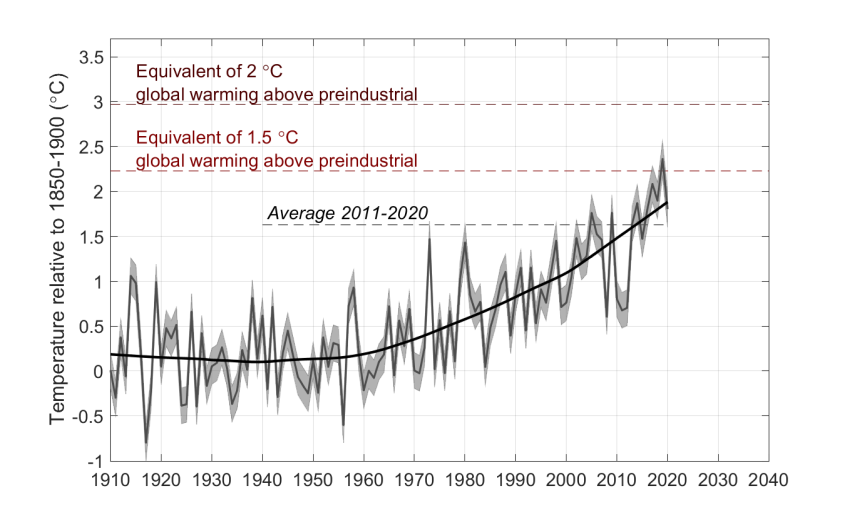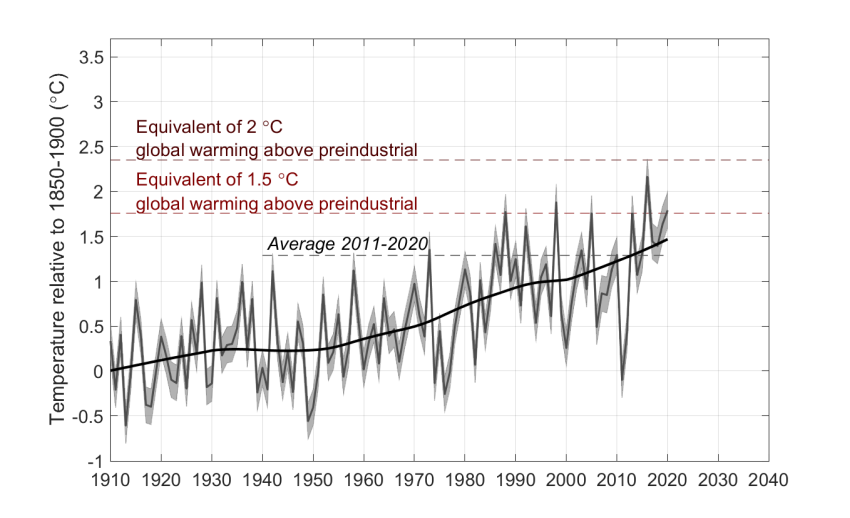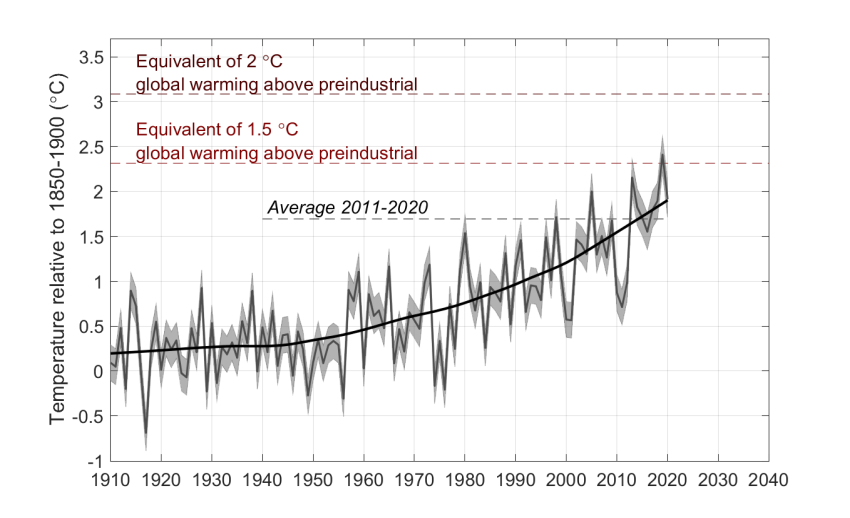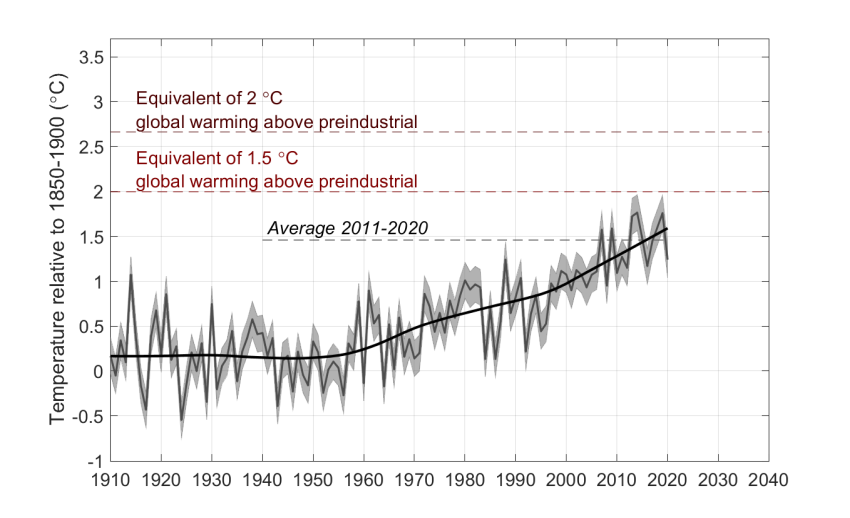Climate Change in Australia
Climate information, projections, tools and data
Years at the +1.5 °C global warming level
Has Australia already had years consistent with the +1.5 °C global climate?
The average annual temperature of Australia in 2019 was at or around the temperature expected to be the new long-term average (the 'new normal') when the world is at +1.5 °C since pre-industrial.
The world hasn’t crossed the threshold of +1.5 °C warming level yet, and the 10-year mean temperature is not expected to reach this level until around 2030 to 2050 - depending on the emissions pathway the world follows, the strength of the climate response to emissions and natural variability. However, the world may have its’ first year at the +1.5 °C warming level in the next few years – temporarily reaching the warming level due to natural variability.
See also: Reaching Global Warming Levels
Climate variability is greater at the national and state level than in the global average, so some places have already experienced a year consistent with the what is expected to be the ‘new normal’ (the long-term average) at a +1.5 °C global warming level. Have we already seen any such years in Australia?
The answer is now yes.
The globe has warmed by around +1.1 °C, Australia by around +1.6 °C, a ratio of around x1.4. This suggests that when the world is at +1.5 °C, Australia will be at around +2.1 °C since 1850–1900. The average temperature of the record year 2019 was at around this temperature – so is expected to be typical of an average year in Australia in a +1.5 °C world.
See also: Australian Warming
The previous record, 2013 is expected to be the 'new normal' in a +1.4 °C world.
Australia
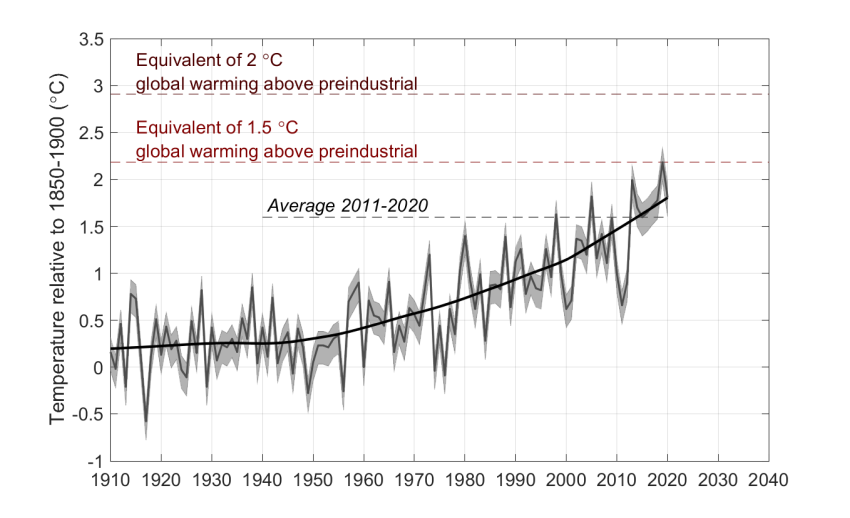
Notes on plots: they show average annual temperature in 1910 to 2020 relative to the 1850–1900 baseline, assuming the estimated warming from 1850–1900 to 1910–1930 from Australian Warming (the uncertainty bound on this estimate is shown added to the full series), lines show the Australian average annual temperature expected at each global warming level based on the observed ratio of regional to global warming to date, assuming this ratio continues (not using modeled regional projections)
These years are a temporal analogue for what the long-term average air temperature would be in those worlds, and for the kinds of atmospheric heat extremes than can occur. However, other aspects of these years will not be equivalent of the average year at these warming levels – the average rainfall will not be equivalent, and sea level takes a long time to come to an equilibrium so it would be much higher.
Notes: plots show average annual temperature in 1910 to 2020 relative to the 1850–1900 baseline, assuming the estimated warming from 1850–1900 to 1910–1930 (the uncertainty bound on this estimate is shown added to the full series), lines show the Australian average annual temperature expected at each global warming level based on the observed ratio of regional to global warming to date, assuming this ratio continues (not using modelled regional projections).
States and Territories
The annual temperatures of states and territories do not always closely track the national average, and there are important differences from year to year, so will not always have the same temporal analogue of the +1.5 °C global warming level.
Years consistent with the expected average temperature when the world is at +1.5 °C in Australia’s states and territories:
- New South Wales and Australian Capital Territory: 2019
- Northern Territory: 1998, 2005, 2013, 2016, 2019, 2020
- Queensland: 2017
- South Australia: 2013
- Tasmania: none
- Victoria: none
- Western Australia: 2019, 2020
New South Wales and Australian Capital Territory
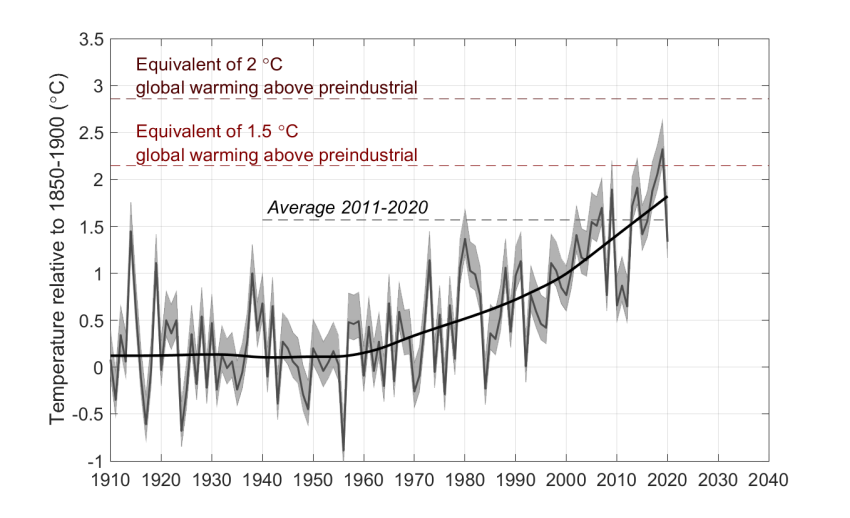
Years equivalent with the expected average temperature when the world is at +1.5 °C: 2019
Northern Territory
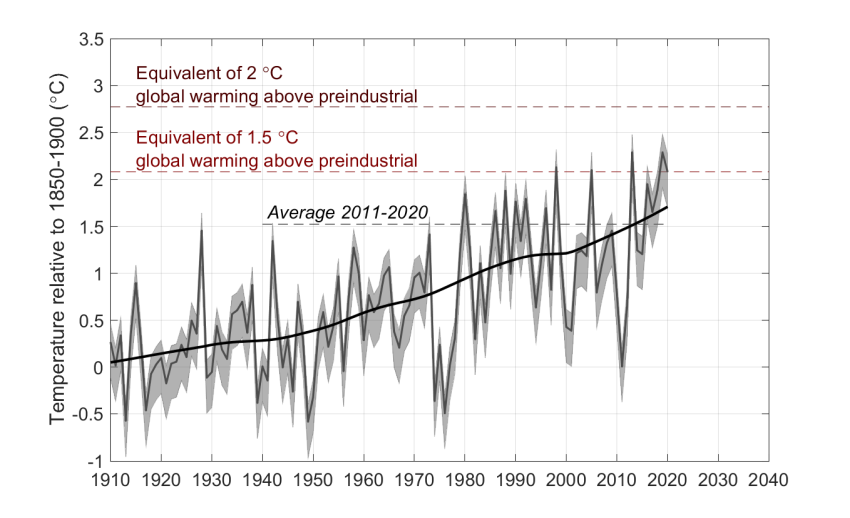
Years equivalent with the expected average temperature when the world is at +1.5 °C: 1998, 2005, 2013, 2016, 2019, 2020
Note: the northern parts of the Northern Territory have experienced a period of regional cooling due to an increase in cloud and rainfall in recent decades, affecting the state average (seen as a reduction in the average between the 1980-2000 period and the 2000-2010 period in the graph above). The temperature has not 'emerged' from the pre-industrial climate (see Emergence ). These factors may mean the method of using the ratio to global warming to estimate years equivalent to the +1.5 °C may give unreliable results - these equivalent years should be taken as preliminary.
Western Australia
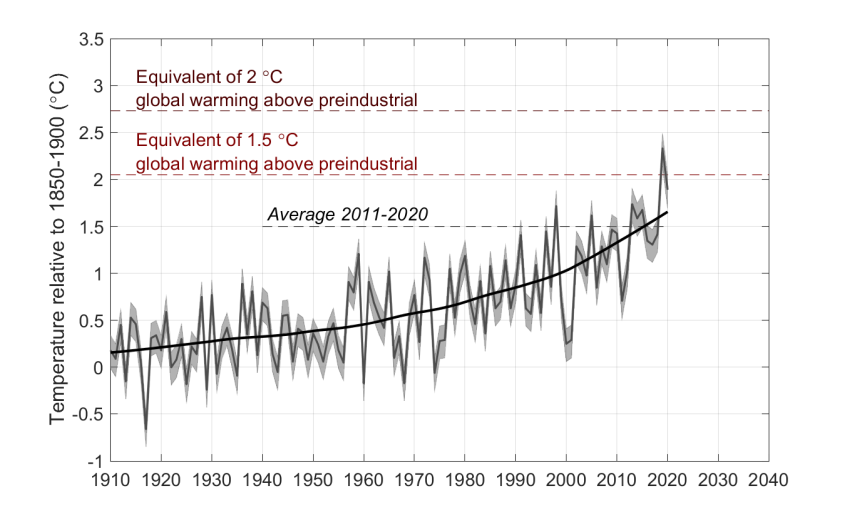
Years equivalent with the expected average temperature when the world is at +1.5 °C: 2019, 2020
Queensland
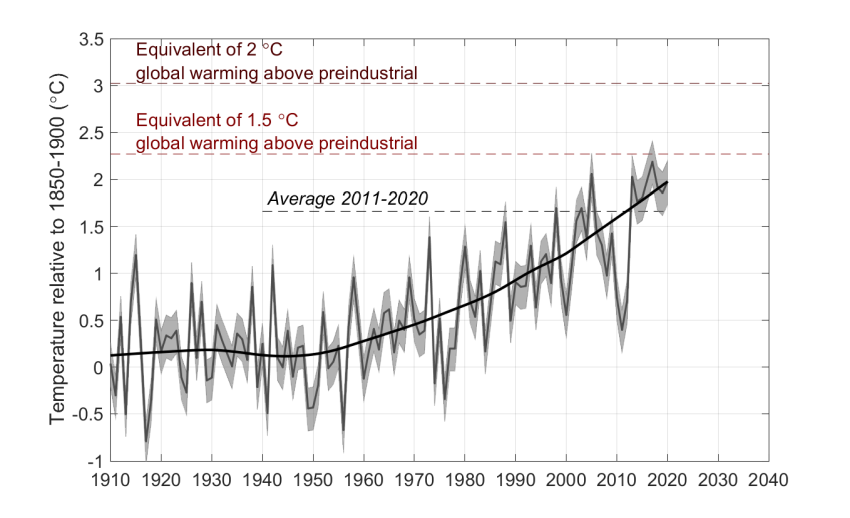
Years equivalent with the expected average temperature when the world is at +1.5 °C: 2017
South Australia
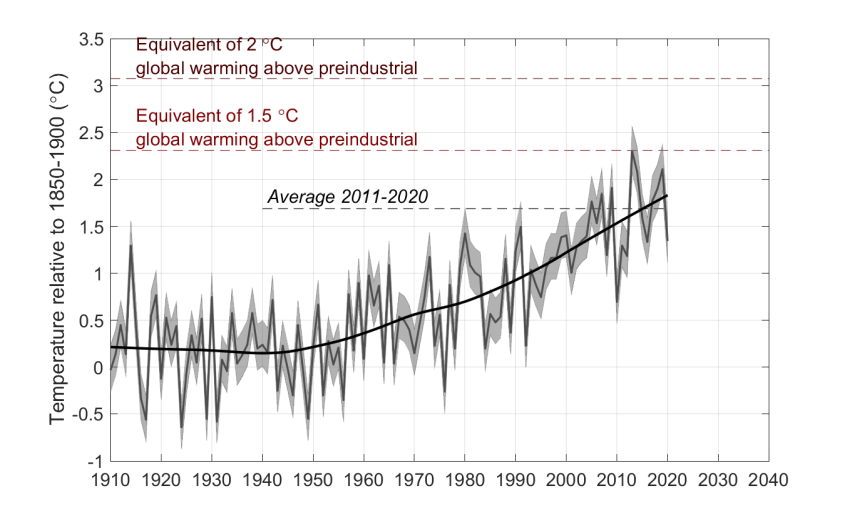
Years equivalent with the expected average temperature when the world is at +1.5 °C: 2013
Tasmania
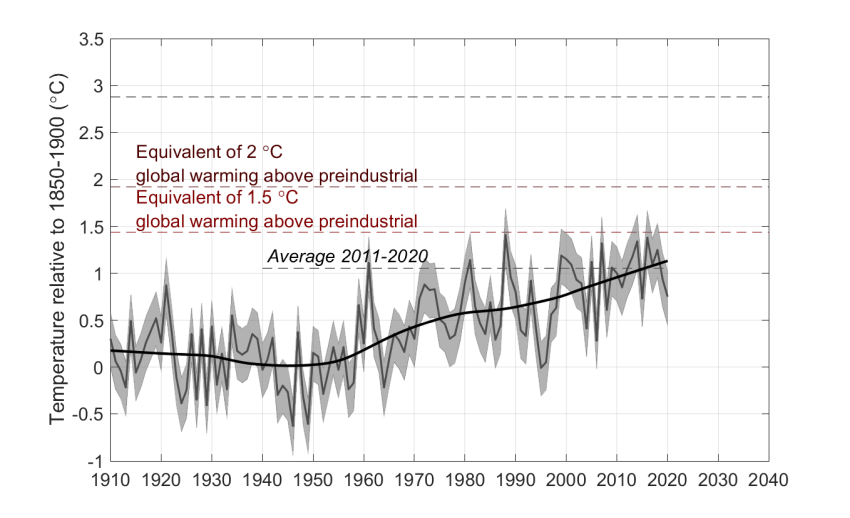
Years equivalent with the expected average temperature when the world is at +1.5 °C: none yet
Victoria
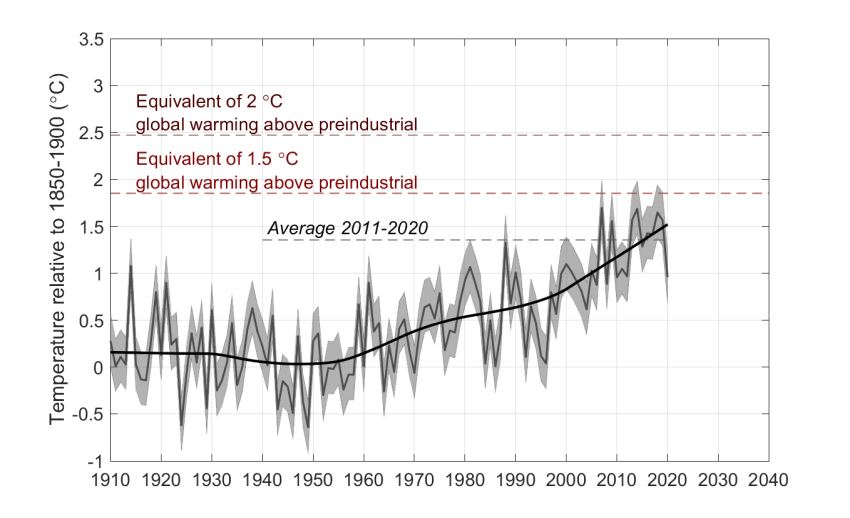
Years equivalent with the expected average temperature when the world is at +1.5 °C: none yet
NRM Super-Clusters
Super-Clusters page for more details.
